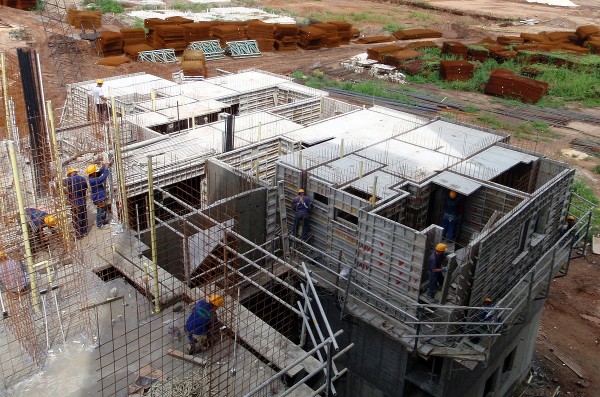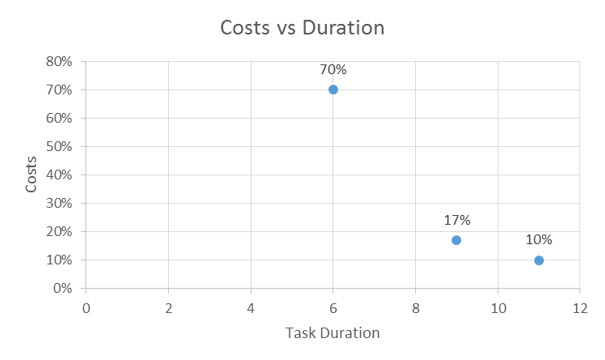Accelerating a construction project seems pretty straightforward right? Work more, pay more, save time, right? Well that’s pretty close, but not quite. In fact, without digging into this a bit more, you could easily work more, save time, pay A LOT more. Let me explain.
When accelerating a construction project, it’s pretty self-explanatory that the job’s costs will be impacted by our decision to cut time from the schedule. But the question is, how are those costs impacted & by how much? For most, our assumption is that more work will result in higher costs. However, as in the case of the Northridge earthquake, often the rewards far outweigh the additional spend leading to a great payday. All of this ties back to our reason for accelerating the schedule in the first place.
How do we truly assess the cost impacts of accelerating construction work on a project?
Let’s take a minute to look only at the impacts to direct costs.
Direct costs are always linked to a specific work item in the schedule. The following items fall into the category of direct costs for construction contractors or owners:
- Labor – work performed by trades or laborers to accomplish a particular job task. Often tracked and paid by the hour.
- Materials & Plant – concrete, rebar, structural steel, lumber and completed units such as air conditioners or pumps, etc.
- Equipment – excavators, cranes, graders, etc.
- Subcontractors – most General Contractors treat subcontracts as a direct cost
- Miscellaneous – permits & fees, legal, consulting specialists hired for a specific task, etc.
Now that we’re clear on which costs we’re referring to, let’s discuss an example work scenario.

Example – Accelerating Construction Work
Let’s say we have a 12 day cast-in-place slab activity. Our estimates say this is a 12 day activity following typical procedures. However, we would like to compress the duration in half to complete in 6 days.
The steps involved in this activity include building forms, installing rebar, pouring the concrete, finishing, stripping forms, reshoring and lastly stripping the reshores.
Compressing by 1 Day
To save 1 day on this activity, we might implement a simple adjustment of procedures. Perhaps we opt for a concrete mix with accelerations to saving on curing. Another option might be to increase worker time from 8 hr/d to 10 hr/d. Both of these options are fairly inexpensive to achieve the 1 day of time savings. Our estimate is a cost increase by 10%.
Compressing by 3 Days
To compress the activity by 3 days, we’ll employ the same suggestion as before – opting for a special concrete mix. But we’ll also have to increase worker time to 10 hr/d and approve work on Saturdays. With the longer hours and weekend work, we now incur overtime costs (x 1.5) for our team. In this case our costs increase by 17%.
Compressing by 6 Days
We’re now brainstorming and implementing many strategies to reach our goal of reducing the activity to 6 days from it’s original 12 days. Perhaps we have to implement a different formwork system or bring in crane pump instead of crane and bucket. And we still have to use the faster curing concrete and approve overtime hours and weekend work. Direct costs have now increased by %70 on this activity to achieve a 6 day time savings.
As we desire to compress the activity more, we always opt to implement the most inexpensive options. However, to save more and more time, our limited options become more and more expensive. Also our viable strategic options become fewer and fewer (and possibly more complex).
Let’s have a picture.

In a compression situation, for direct costs, the relationship of Duration to Costs is inverse. As we compress and decrease Task Duration, Costs increase, perhaps exponentially depending on how far we go.
Compressing a project schedule requires a specific process that looks at both duration and cost impacts in order to optimize the two. Of course, if costs aren’t a concern, then you can compress significantly. In most situations, Direct Costs are tightly managed so you’ll want to calculate the true cost impact of compressing a task to keep your budget in check.
This example was based on content from the book Construction Scheduling & Control by Dr. Saleh Mubarak.
This isn’t the full picture. In the next post, we’ll discuss Indirect Costs in a Compression situation.
Learn More
Hey, remember in the spring we ran a free webinar with Dr. Saleh Mubarak on Schedule Compression Techniques? Well, we’re doing it again. Click the banner below to reserve your spot on the free webinar.
“Concrete Formwork” by WTF Formwork – http://www.wallties.com – Wall – Ties & Forms, Inc.. Licensed under CC BY-SA 3.0 via Commons – https://commons.wikimedia.org/wiki/File:Concrete_Formwork.JPG#/media/File:Concrete_Formwork.JPG


